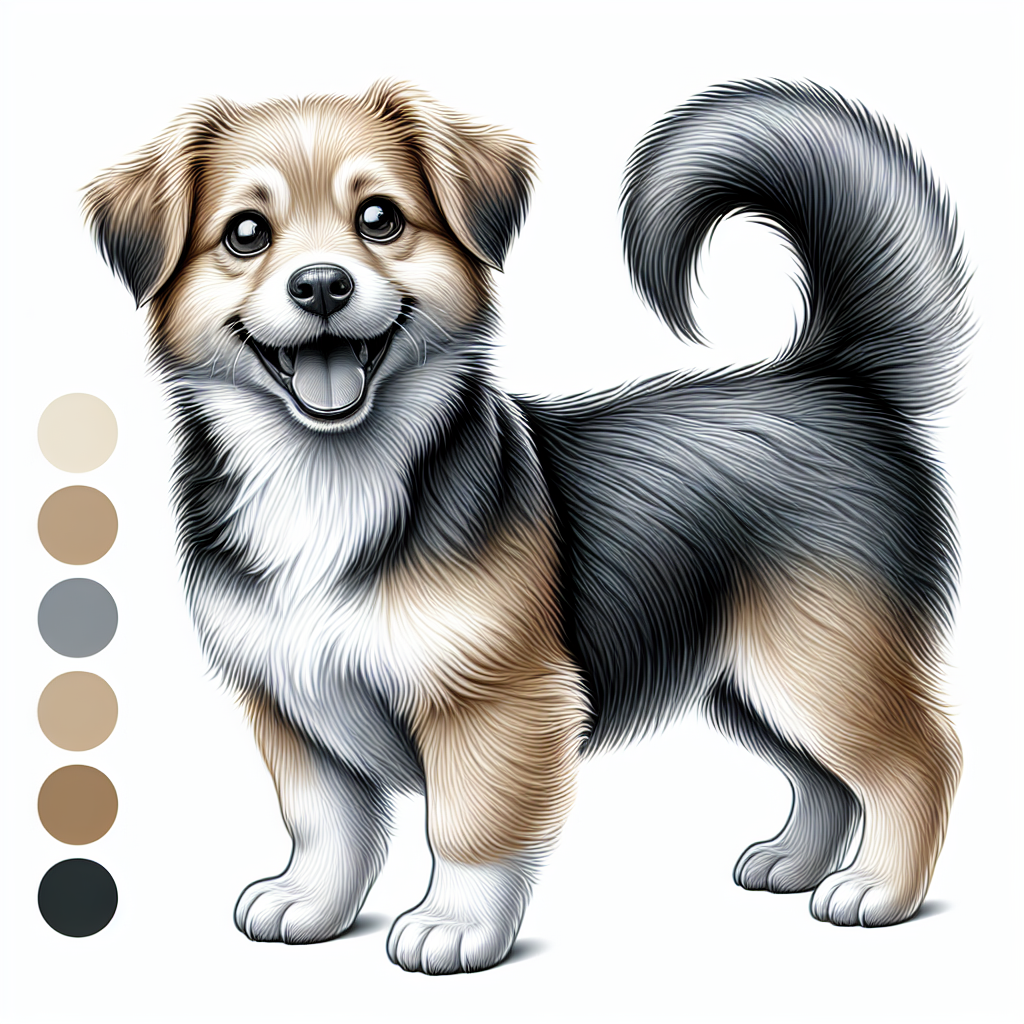Introduction to Fleas and Their Habits

Hey there, friend. Ever sat on your porch, sipping coffee, and noticed your dog scratching away like he’s got an itch that just won’t quit? Yep, that’s the handiwork of fleas. These tiny bloodsuckers can turn your peaceful home into a circus of jumping, biting chaos. Fleas are nature’s little hitchhikers, and they know how to catch a ride. They don’t need a lot of coaxing—just the right flea attraction factors, and they’re all in. Let’s dive into their world, where they live, and what makes them tick (or hop, in this case).
Fleas are not picky. They’ll hang out on your pets, in your carpet, or even in that old couch you’ve been meaning to throw out. But what really draws them in? Those little beasts are attracted to a cocktail of environmental cues and behaviors. They’re masters of survival. With keen senses, they can sniff out a host faster than you can say “flea infestation signs.” And once they’ve found their new home, they settle in, ready to make your life a little bit itchier.
The Mysterious Attraction: What Draws Fleas In?
Here’s the thing about fleas—they’re like the ultimate fans at a rock concert, pushing their way to the front row. The question is, what gets them there? Flea host-seeking behavior is a wild ride. They’re drawn to warmth, movement, and, believe it or not, the smell of carbon dioxide. It’s like they’re out there, searching for the perfect party, and your pet is the VIP pass.
But it’s not just warmth and movement that get them going. Fleas have a soft spot for carbon dioxide. You see, when you or your pet breathe out, it sends a signal—like a neon sign saying “Open for business.” And that’s when these little guys move in. They’re not just looking for a free meal; they’re looking for a home. A place where they can kick back, have a few laughs, and raise a family. Flea attraction factors are as varied as they are mysterious, but one thing’s for sure—they know what they like.
Breaking Down the Science: Light, Heat, and Movement
Alright, let’s get a bit science-y. Fleas have this thing with light, heat, and movement. It’s like their trifecta of attraction. Flea behavior light heat relationship is one for the books. They love it. They’re drawn to light like a moth to a flame—except they’re not gonna get burned. Instead, they find their next meal ticket.
Heat is another big player. When your dog comes in from a run, all warm and cozy, he’s basically wearing a “flea buffet” sign. And don’t get me started on movement. Fleas have this knack for detecting movement. It’s like they can feel the vibrations of a potential host walking by, and bam—they’re on it. You could say they have a sixth sense when it comes to finding a host. Flea movement detection is their superpower, their secret sauce.
The Role of Carbon Dioxide in Flea Attraction
Now, let’s talk carbon dioxide. It’s not just something you breathe out. For fleas, it’s a homing beacon. Carbon dioxide fleas love it. It’s like the smell of fresh coffee in the morning—irresistible. When you or your pet exhale, it sends a signal that there’s life nearby, and fleas are all about that life.
This gas is a big deal in the flea world. It tells them where to go and when to jump. Think of it as their GPS, guiding them to the nearest host. It’s a part of the flea attraction factors that can’t be ignored. So, the next time you’re breathing easy, remember—somewhere out there, a flea is picking up on that carbon dioxide and plotting its next move.
Fleas in Your Environment: What to Look Out For
Alright, let’s bring it home. You’re probably wondering what all this means for you and your home. Fleas can be sneaky, but there are flea environmental cues to watch out for. First, if your pet starts scratching more than usual, that might be a sign. Check for flea dirt, those tiny black specks that look like pepper, or worse, flea infestation signs like bites on your ankles.
Your environment plays a big role in flea attraction. If you’ve got a warm, humid home, you’re basically rolling out the red carpet for them. Keep an eye on your pets, and maybe give that old couch a once-over. Fleas love to hide in places you wouldn’t think to look. They’re crafty like that.
So, there you have it. A peek into what makes fleas tick. It’s not a glamorous world, but it’s a fascinating one. They’re out there, lurking, waiting for the right moment to join your little family. But now, you’ve got the scoop on what they’re attracted to and what you can do to keep them at bay. Thanks for hanging out with me for this little chat. I hope it helps you out, and remember, you’ve got this—keep your eyes open, and those fleas won’t stand a chance.
Dark and Damp: Fleas’ Favorite Hangouts
Ah, the wild world of fleas. These tiny jumpers are like the punk rockers of the insect world. They’re all about dark and damp places—think basements, crawl spaces, and, yes, even your pet’s bed. It’s like they’re on a mission to find the grungiest spots in your house. Why? Because these places are prime real estate for fleas. They thrive in environments that are cozy and humid, making these spots the perfect hideouts.
Now, where fleas hide in the home can be a bit of a mystery. You might think your house is spotless, but these critters are sneaky. They love the darkness—dark places fleas like are often overlooked. Imagine them setting up their own flea nightclub in the cracks of your floorboards or behind the furniture. It’s their preferred scene, away from the light and full of little crevices to call home.
But it’s not just inside that they’re partying. Your yard can be a flea hotspot, too. Flea hiding spots in the yard are just as elusive. Tall grass, leaf piles, and shaded corners are their favorite outdoor haunts. They’re always on the lookout for a dark, damp hangout—like those shady patches under your deck or the untouched corners of your garden.
The Scent of Blood: Why Fleas Love Your Pet
Let’s get real. Fleas and blood are like peanut butter and jelly. Your pet is a walking flea buffet, and that’s why fleas are attracted to dogs. They’re drawn to the scent of blood, and your furry friend provides just that. It’s like they’re wearing a sign that says, “Free All-You-Can-Eat Buffet!”
Ever notice how your dog can be flea-free one moment and then crawling with them the next? That’s the scent of blood doing its magic. Fleas are tiny little vampires, always on the prowl for their next meal. Your pet’s warm, furry body is a flea’s dream come true. They latch on, and before you know it, your pet is scratching more than a DJ at a club.
There’s nothing quite like seeing the signs of fleas in the environment. Your pet’s constant itching is a dead giveaway. It’s a sign that those little bloodsuckers have moved in. And once they’re on your pet, they’re not shy. They’ll set up camp, lay eggs, and before you know it, you’ve got a full-blown flea invasion on your hands. It’s enough to make you want to scream into a pillow.
Flea Magnet: How Movement Attracts Fleas
Movement is like a neon sign for fleas. It’s one of those things that makes you go, “Huh, who knew?” Fleas are attracted to movement—it’s like their little flea radar goes off. When your dog bolts across the yard, it’s like ringing a dinner bell for these critters. They’re drawn to the vibrations, and before you know it, they’re hitching a ride on your pet.
It’s quite the spectacle. Flea attraction to movement is one of those strange mysteries of nature. You might not see them, but they’re there, just waiting for the right moment to strike. Your pet runs, and suddenly, it’s like a flea flash mob. They’re hopping on, ready for a feast.
When you think about it, movement is a flea’s best friend. It’s how they find their next meal. So, the next time your dog takes off like a rocket, just remember—those fleas are lurking, waiting for their chance. It’s a flea’s life, and they’re making the most of it.
Sneaky Hiding Spots: Fleas’ Secret Lairs
Fleas have a knack for finding the sneakiest hiding spots. It’s like they’re playing a game of hide-and-seek, and they’re winning. Where fleas hide in the home is a question that can drive you up the wall. They’re not just hanging out in plain sight—they’re in the cracks, the crevices, the seams of your couch. It’s like they’re on a secret mission to find the best hiding spots.
Their secret lairs are everywhere. You might not see them, but they’re there, lurking. It’s almost impressive how well they can hide. Flea hiding spots in the yard are just as sneaky. They’re masters of disguise, hiding in tall grass, leaf piles, and shaded corners. It’s like they’ve got a Ph.D. in stealth.
The thing is, they’re not just hiding for fun. They’re laying eggs, multiplying, and before you know it, they’re taking over. It’s enough to make your skin crawl. But knowing where they hide can be half the battle. Once you know their secret lairs, you can start to fight back. It’s like being a detective in your own home—always on the hunt for those pesky pests.
Weather Wonders: How Climate Affects Flea Behavior
Oh, the weather. It’s got its quirks, and fleas are no exception. How weather affects flea activity is one of those things that can catch you off guard. Fleas are like that friend who only shows up when the weather’s nice. Warm, humid conditions are their jam. It’s like a flea paradise, and they’re living it up.
When the weather is just right, fleas come out to play. They’re more active, more noticeable, and more annoying. It’s like they get a second wind when the humidity rises. You might think you’re in the clear during colder months, but don’t be fooled. Fleas are resilient little buggers. They can hunker down and wait for the right moment to strike.
It’s a never-ending cycle of flea activity. You might not see them, but they’re there, waiting for the perfect weather to make their move. So, the next time you check the weather forecast, just remember—those fleas are watching, too. They’re always on the lookout for the perfect conditions to make their grand entrance.
So, here we are, navigating the world of fleas like seasoned pros. It’s not easy, but you’re not alone. We’re in this together, battling the fleas one step at a time. Keep your chin up, and here’s wishing you a flea-free day!
The Mystery of Flea Attractants: Cracking the Code
Hey there, folks. Welcome to the final act of our little flea circus. Just when you thought you knew everything about these tiny bloodsuckers, there’s more. Let’s jump right into this rabbit hole of mystery. Fleas are like tiny detectives—always on the hunt for their next host. Ever wonder what makes them tick—or hop, for that matter? It’s like cracking the code of an ancient secret. You think you know what attracts fleas to humans, but there’s more to the story. They get drawn to certain things, and we’re on the case.
Now, if you’ve ever had a flea encounter, you know they’re picky. It’s not just about finding any old host—it’s about finding the perfect one. The warmth of a body, the carbon dioxide we breathe out, even the vibrations of our movements—these are the siren songs to fleas. You’d think they’re auditioning for a role in a drama, but no, they’re just doing what they do best—finding the next warm body to settle on.
The Flea’s Love Affair with Animals: What Drives Them?
Then, there’s their love affair with animals, a tale as old as time. What really drives them to cozy up to our furry friends? If you’ve ever watched a dog scratch away or seen a cat’s twitch of annoyance, you know fleas have a type. They’re like those old-timey romantics—drawn to the promise of a warm night spent nestled in fur.
Why do fleas prefer certain animals? It’s not just about blood—it’s chemistry. Some critters have a certain je ne sais quoi that fleas can’t resist. Maybe it’s the pheromones, maybe it’s the heat. Whatever it is, these little guys have preferences, and we’re here to spill the beans. It’s like a strange dance of attraction—one that leaves our pets, and us, scratching our heads.
Beyond Blood: The Unexpected Flea Attractions
But hold your horses, blood ain’t the only thing they’re after. Fleas have a shopping list, and some items might surprise you. We dive into the unexpected attractions that make fleas look twice. You’d think they’d stick to the basics, but nope—fleas have their own quirks.
Unusual flea attraction factors can include things like the color of your socks (seriously!) or even the way you smell after a long day. Weird things that attract fleas seem to pop up like unwelcome guests at a party. It’s the peculiarities that keep life interesting, right?
Bizarre Flea Magnet: Strange Cases from the Field
And if you think you’ve heard it all, wait till you hear about the bizarre cases from the field—strange things that only fleas seem to love. There are stories of strange flea infestations that’ll make you raise an eyebrow. Imagine a flea party happening in an old, abandoned piano because of the vibrations from the nearby traffic.
Some folks have even found fleas infesting places you’d never expect—like the inside of a dusty attic or nestled in the fibers of a forgotten rug. It’s like fleas have their own set of rules, and they’re not sharing the playbook with us. It keeps things interesting, if nothing else.
How to Keep Fleas at Bay: Simple Tricks That Work
Let’s wrap it up with some flea-busting tricks. They’re simple, they’re easy, and they work. And hey, at the end of the day, knowledge is power. So, thanks for sticking around. Here’s to a flea-free life. Keep those critters away and take care!
Preventing fleas naturally can be as easy as a regular grooming session for your pet. Brushing isn’t just for beauty—it’s a frontline defense against these jumpy invaders. Another tip from the wise? Vacuuming. It’s not glamorous, but it gets the job done.
Flea control tips from experts often include a dash of the unusual. Some swear by a sprinkle of diatomaceous earth in the carpet, while others tout the power of a homemade lemon spray. You don’t need to break the bank to keep these pests at bay.
So, go forth and conquer the flea menace. With a bit of wit and a pinch of persistence, you can outsmart these little hitchhikers. Here’s to you and your newfound flea wisdom. Stay sharp, stay flea-free, and remember—you’re the boss, not the fleas. Thanks for tagging along on this wild ride.
Quick Takeaways:
Alright, let’s lay it out. What are fleas attracted to? It’s a list longer than your grocery receipt. They’re not just bloodsuckers; they’re connoisseurs of their environment. First up, warmth and humidity. They thrive in it, like a teenager in a Wi-Fi zone. Fleas have this thing with heat—it’s like their morning coffee. It wakes them up and gets them moving. When the sun is up, so are they. And dark places? Oh, they love them. Basements and crawl spaces are like their vacation homes.
Then there’s carbon dioxide. Yep, the stuff we breathe out. It’s like a magnet for them. The more you breathe, the more they know you’re around. Think of it as their version of a dinner bell ringing. Movement, too. Fleas are like tiny ninjas—always watching, waiting for the perfect moment to pounce. They get a kick out of your dog’s zoomies around the yard. It’s like a flea carnival, and your dog is the main attraction.
Let’s chat about blood—flea’s favorite cocktail. But not just any blood; they have preferences. Dogs and cats are their usual go-tos, but humans are not off the menu. If you’re warm and breathing, you’re on their radar. Flea behavior is quite the puzzle, but there’s a method to their madness.
FAQs:
1. *What are fleas attracted to in our homes?*
Fleas are drawn to warmth, darkness, and humidity. Basements, crawl spaces, and pet beds are prime real estate. They also love hiding in carpet fibers and floorboard cracks. Your home is their playground if you’re not careful.
2. *Why are fleas attracted to dogs more than humans?*
Dogs offer the perfect blend of warmth, scent, and movement. Their regular trips outside make them easy targets. Plus, their fur provides a cozy spot for fleas to hide and feast.
3. *How does weather impact flea activity?*
Warm, humid weather is a flea’s dream. They thrive in these conditions, becoming more active and multiplying faster. If it’s sunny and moist, expect a flea fest.
4. *What are signs of fleas in the environment?*
Look for itchy pets, flea dirt (tiny black specks), and bites on your skin. Fleas also love hanging out in your pet’s bedding, furniture, and carpets. If you see your pet scratching more than usual, it might be time to investigate.
5. *Where do fleas hide in the yard?*
Fleas hang out in shady, moist areas—think under porches, in tall grass, and near pet resting spots. Keeping your yard trimmed and tidy helps deter them.
Conclusion:
In the grand scheme of things, what are fleas attracted to? A little bit of everything, it seems. Heat, carbon dioxide, movement—they’re not picky. They’re like the gatecrashers at a wedding, always ready to join the party. And with the right conditions, a flea infestation can turn your home into their personal playground. But knowing their tricks helps you stay one step ahead. Whether it’s keeping your house cool and dry or regularly checking your pets, a little vigilance goes a long way in keeping these pesky critters at bay.
So, there you have it. The lowdown on flea attraction factors. Thanks for joining me on this wild ride. May your days be flea-free and your pets itch-free. Here’s to keeping those tiny bloodsuckers in check! Cheers!
References:
1. https://www.ecoguardpestmanagement.com/pest-resources/what-attracts-fleas
2. https://www.prokill.co.uk/blog/fleas-attracted-heat-light/
3. https://www.adamspest.com/blog/2023/july/5-reasons-why-youre-attracting-fleas-to-your-yar/
4. https://www.ondemandpestcontrol.com/what-attracts-fleas/
Our solution eradicates fleas on contact without harmful chemicals, ensuring a safe environment for your pets and family. Easy to use and highly effective, SayByeBugs helps you maintain a flea-free home. Learn more and order today at SayByeBugs.com
Our solution eradicates fleas on contact without harmful chemicals, ensuring a safe environment for your pets and family. Easy to use and highly effective, SayByeBugs helps you maintain a flea-free home. Learn more and order today at SayByeBugs.com








